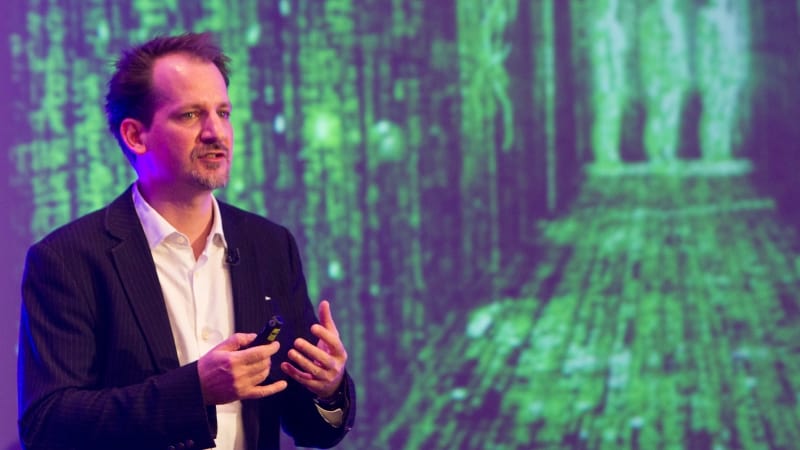He was one of the most highly rated speakers at Performance Marketing Insights (PMI) London and his session, ‘The 5 Forgotten Rules of Conversion Rate Optimisation’, also emerged as one of the favourites, so we caught up with the speaker himself, to find out more.
With more than 10 years experience in online distribution and marketing, it is clear that founding partner at House of Kaizen, Ivan Imhoff, knows his stuff.
As well as spending more than seven years working at Hilton International, in roles such as director of online channel development and director of e-business services, he co-founded his current firm – which is an amalgamation of independent digital marketing agencies, Web Liquid Group and NetX, and conversion optimisation specialist firm, House of Kaizen.
Now, as head of conversion rate optimisation for House of Kaizen, Imhoff said his role involves developing the strategies, methodologies and processes that connect traffic-driving activities with the conversion process that happens in a client’s e-commerce ‘websphere’.
“I spend much of the time with our teams and clients, enhancing e-commerce strategies, visitor user journeys and marketing activities to test and implement conversion improvements,” Imhoff said.
Post-merge
In terms of business post-merge, Imhoff said it has allowed them to leverage their US and UK presence for large global clients.
“Most importantly it has allowed us to improve the end-to-end financial performance for clients marketing budgets thanks to the ability to optimise the entire user journey from the ad, through the landing page and down the conversion path through the website.”
Following delegate feedback, attendees at PMI London said Ivan’s session was one of the most interactive and engaging and his presentation-style, by involving the audience, also went down well.
Despite having spoken at several events, such as PMI New York, Imhoff said he does still get nervous, but stressed if you enjoy what you do, then this will come out in the presentation
“I try to look at it like a nice conversation combined with an opportunity to share. Do that well and you will be ok. Oh, and I rehearse – a lot. This way you can read the audience and adapt to presentation seamlessly to the audience reactions.”
Resolving questions
For those that missed Imhoff’s session, the most important tip he gave the audience was to think of the visitor and the questions they have about your product/service and focus on answering those questions, those anxieties and how it helps the visitor. “Resolve the questions and conversion will increase,” he said.
While not being a big fan of the expression the one ‘conversion killer’, in terms of what he encounters in this area, Imhoff said he thinks businesses are still very much siloed.
“PPC management here, site design there, affiliate management there, social media over yonder, content strategy and merchandising is that area over there – very siloed,” he begins.
“Unfortunately, visitors and customers don’t work in silos and businesses are slow to reorganise their teams, structure and strategies to adapt user journeys.”
Imhoff stresses that companies/websites need to ‘talk to their visitors’. On the subject of bugbears in conversion rate optimisation, he said: “People, marketers and companies all still believe it is about technology. That technology can solve conversion problems. It’s not.”
Internet, social and touch
With such a stash of industry experience, we asked Imhoff what top three things stood out to him as being major industry milestones during his time in the field.
“Firstly, the light bulb moment when businesses went ‘Humm this little interweb thing may have legs’; and budgets took a sharp turn from offline to online,” he begins.
“Then, with no surprise, the advent of social, or the democratisation of vox populi that started with the blog tidal wave.
“Of course the advent of touch interaction: most would say ‘smartphone and tablets!’, but if you think about it, it’s what has enabled smart mobile devices – and that is the touch interface. Touch is of course ubiquitous with mobile technology, but it’s a lot more. It’s the change in interface design, the change in content consumption, it’s the change in communication habits and it marks the beginning of the end of the pen.”
Real-time ads, basket abandonment and attribution
In terms of Imhoff’s ‘must attend’ sessions at the recent PMI London, he said programmatic display advertising and real-time advertising is key, given the changes in the industry are ‘tremendous’ and the impact to advertisers’ distribution strategies and approaches is huge.
On basket abandonment, he said still very little is done to understand the drop off and to address one of the biggest sales growth opportunities.
Another area of interest for Imhoff was attribution. “Most businesses still fail to understand how users end up converting. It is not due to just search, or just social or just display. A lot of inroads need to be done to come to grips with attribution and to understand how to model and track it,” Imhoff added.


